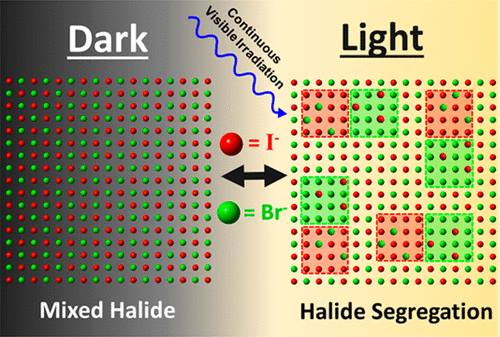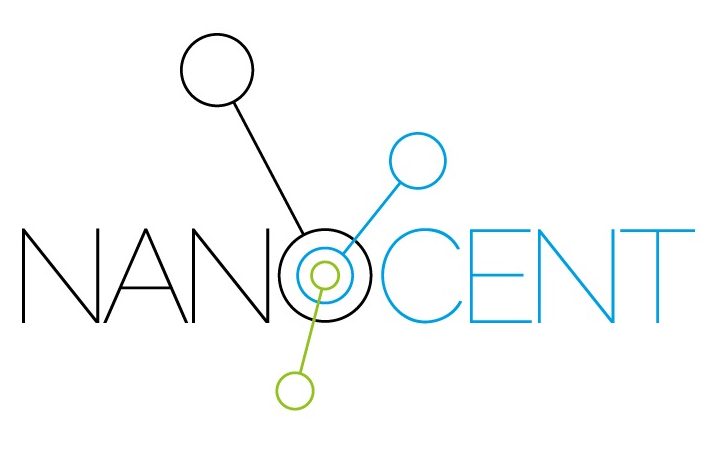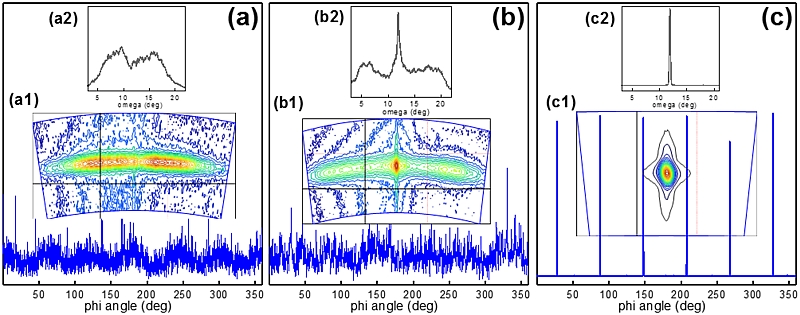2023–2025
Structural
changes induced by light soaking in mixed-halide
perovskites

The project is focused on
the study and describtion of photoinduced phase segregation in mixed halide
perovskites which is the key phenomenon decreasing the solar device efficiency
and leading to operational degradation of the absorber material. We will study
materials-intrinsic, microstructurally driven, and contact-layer affected
photosegregation on single-crystalline, polycrystalline, and deviceready
samples, respectively. A sample series varying in halide composition will be
prepared by chemical routes. The evolution of microstructure and performance
during light soaking will be studied in detail by the combination of in-situ and
in-operando X-ray scattering methods and optical spectroscopy techniques. The
results of X-ray diffraction measurements (phase composition, internal strain
distribution, and domain morphology) will be correlated with optoelectronic
properties. Obtained findings will result in the fabrication of the prototype
photovoltaic device with enhanced resistance to phase segregation.
The aim
of the project is the seucidation of the role of strain inside a mixed halide
perovskite crystal in the opening of ion migration channels during light
soaking. Based on this, the microstructure and the composition will be
engineered to enhance the phase-segregation resistance of solar cells.
figure from M. C. Brennan, S. Draguta, P.V. Kamat, M.
Kuno, ACS Energy Lett. 2018, 3, 1, 204–213
Finished projects
2017–2022
Nanocent

Principal investigator: Milan
Dopita
NanoCent,
Nanomaterials centre for advanced
applications
CZ.02.1.01/0.0/0.0/15_003/0000485
Implementation period:
1.2.2017 – 31.10.2022
Budget:
132 668 000 CZK
The aim of the project NANOCENT is to establish at the
Faculty of Mathematics and Physics of the Charles University in Prague a top
scientific center which will integrate scientists dealing with nanomaterial
research.
(1) materials on the basis of severly impaired carbon used in
surface chemistry, energy applications and microelectronics; (2) nanocrystalline
and epitaxial thin films for microelectronics; (3) nanocrystalline metal oxides
with photocatalytic properties and (4) ultra-fine grain titanium and magnesium
alloys for biomedical applications.
The center focused on fundamental
research, however it is also opened to cooperation with domestic and foreign
industrial enterprises to which it can offer assistance of highly motivated,
experienced scientists and wide variety of modern analytical techniques and
top-class, unique equipment for materials microstructure and properties
investigation.
Student
projects
Grant agency of
Charles University Univerzity Karlovy
2019–2022
Principle investigator: Tereza
Košutová
GAUK
1546119, Study of the thermal stability and real structure of heterogeneous
nanoparticles prepared by gas aggregation cluster source
Nanoparticles
investigated in the frame of proposed project belong to modern, progressive
materials with wide application potential, perspective from the point of view of
their use in the high added value applications.
The scope of this project
is the preparation of the series of heterogeneous metal-based nanoparticles
using the gas aggregation cluster source. Their deposition on planar and
structured solid substrates and into a liquid matrix. Complex structural and
microstructural characterization of prepared samples using the x-ray scattering
methods. Determination of the phase composition, lattice parameters and
parameters of the real structure – defects of the crystal lattice.
Investigation of optical, thermal and magnetic properties of prepared samples.
Development of relevant physical models of studied nanoparticles. Correlations
of nanoparticles preparation parameters with its morphology (type, shape, size
distribution) and determined structural and microstructural parameters of
samples and the real structure parameters.
A special accent will be
focused on the study of thermal stability and thermal evolution of prepared
materials. Based on in-situ high temperature x-ray diffraction and small angle
scattering (SAXS) measurements the detailed description of temperature
dependencies of structural and microstructural parameters and real structure
parameters of prepared nanoparticles will be created.
Principle investigator: Petr
Cejpek
GAUK
244217, , Preparation and study of the properties of shape memory alloys Ni2MnGa
doped with Indium
Shape memory alloys are modern type of materials in
which the change of external conditions (e.g. temperature change, applying of
the external field, etc.) can induce reversible changes in their structure
resulting in a reversible change of their macroscopic dimensions. Perspective
representative of these materials are Ni2MnGa based alloys in which the shape
memory effect is induced by an external magnetic field (often smaller than
1 T). Important aspect of these materials is enormous sensitivity of the
structural changes and physical properties to slight variations in its
composition and/or stoichiometry.
Proposed project is focused on the
preparation and study of single crystal, Indium dopped Ni2MnGa alloys with
composition a) preserving the ideal stoichiometric ratio 2:1:1, ie. the
composition Ni2MnGa(1-x)In(x) and b) of the samples with non-stoichiometric
composition.
Structure, microstructure and reversible structural changes
of prepared samples will be studied by a combination of modern experimental
methods with emphasis on X-ray scattering. The described structural changes will
be correlated with changes of physical properties (magnetic susceptibility,
Curie temperature, resistivity, magneto-optical properties, etc.) of prepared
alloys. The results obtained during the project implementation will
significantly contribute to understanding of the principles of martensitic
transformation, which is crucial for the shape memory effect.




